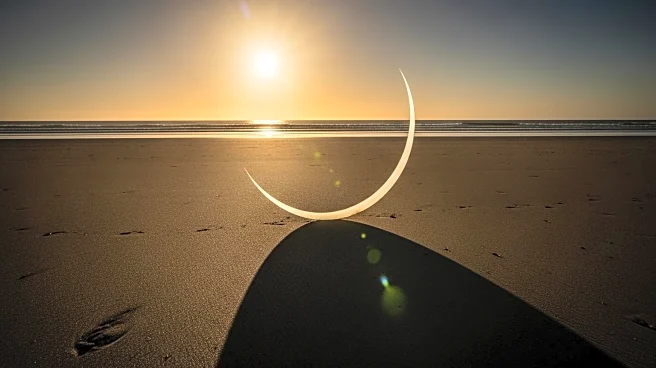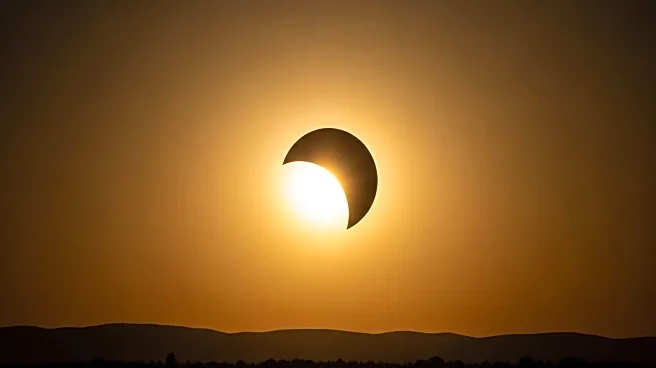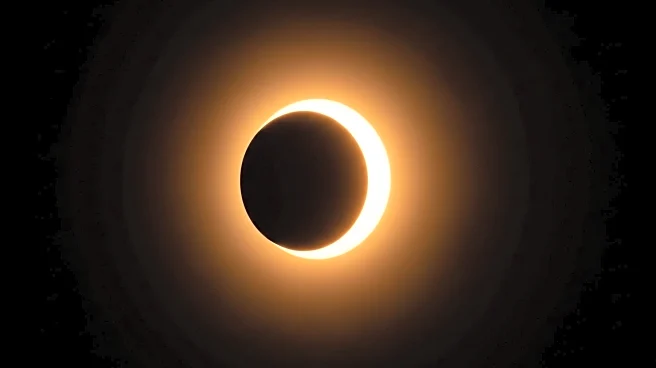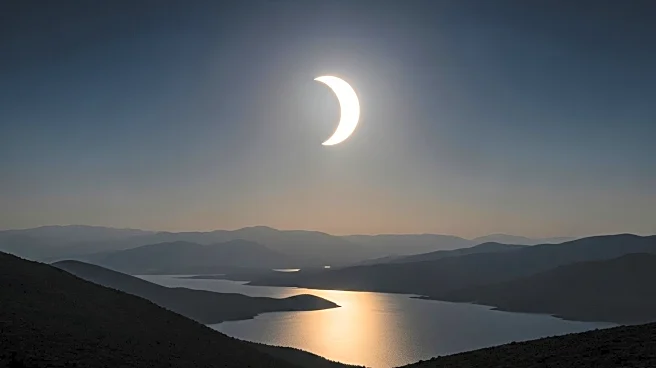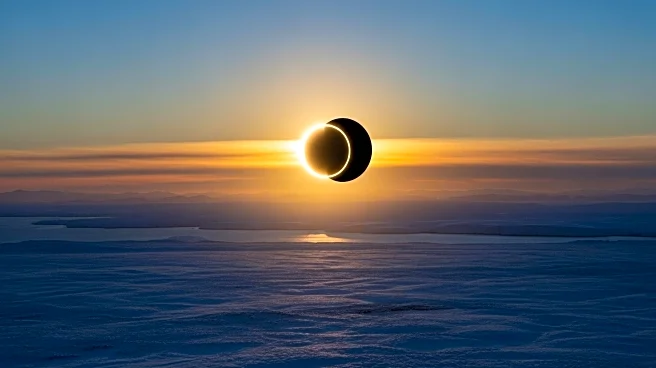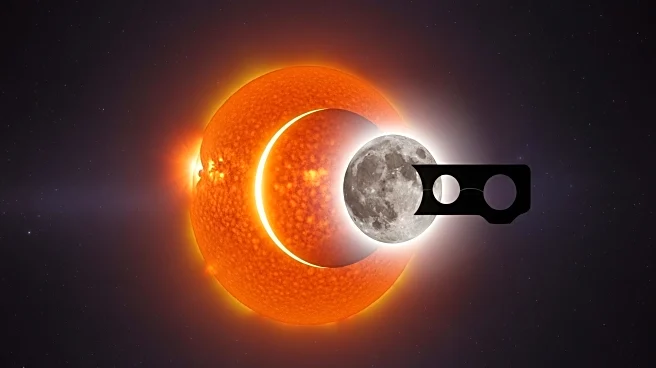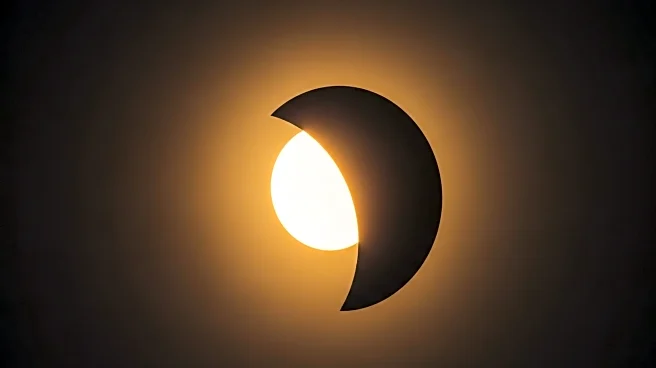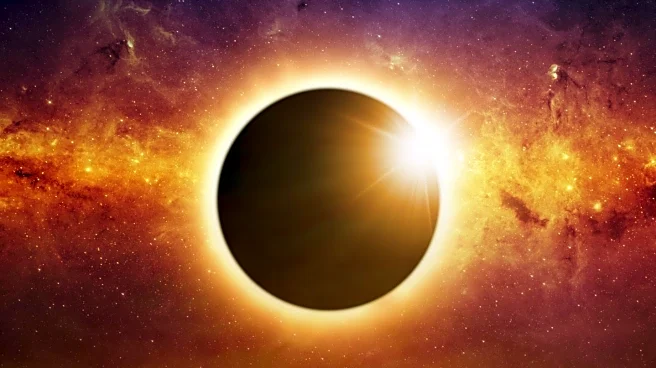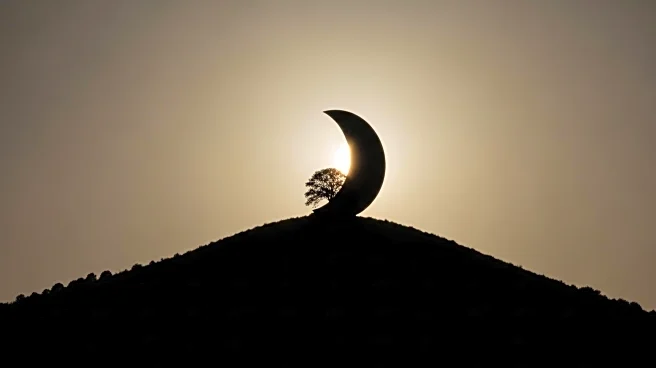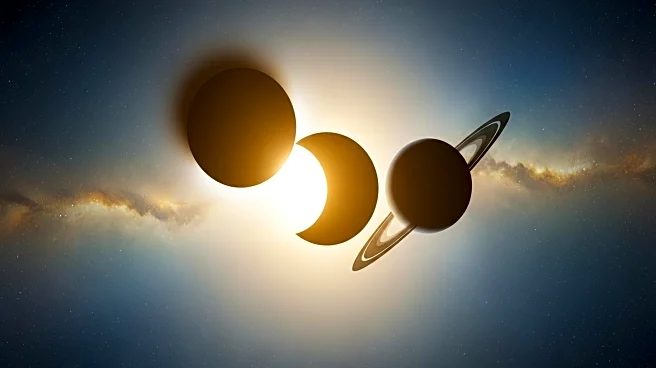What's Happening?
A partial solar eclipse is taking place on September 21, 2025, where the new moon partially obscures the sun. This celestial event is visible in regions such as New Zealand, Antarctica, and parts of the South Pacific. The eclipse begins at 1:29 p.m. EDT and reaches its maximum coverage at 3:41 p.m. EDT. This phenomenon is sometimes referred to as an 'equinox eclipse' due to its proximity to the September equinox, marking seasonal changes in both hemispheres. While the eclipse is not visible in the United States, it can be observed safely through solar eclipse glasses, solar filters, or pinhole projectors. Space.com is providing a livestream for those unable to view it in person.
Why It's Important?
Solar eclipses are significant astronomical events that offer unique opportunities for scientific observation and public engagement. Although this particular eclipse is not visible in the U.S., it highlights the global nature of such phenomena and the importance of international collaboration in astronomy. Eclipses can provide insights into solar dynamics and the moon's orbit, contributing to scientific research. Additionally, they serve as educational moments, encouraging interest in space science and safe viewing practices. The livestreaming of the event ensures accessibility, allowing people worldwide to experience the eclipse virtually.
What's Next?
Following this partial solar eclipse, the next significant solar event is an annular solar eclipse on February 17, 2026. Known as the 'ring of fire' eclipse, it will primarily be visible in Antarctica. This upcoming event will offer another opportunity for scientific study and public interest, although its visibility will be limited geographically. Preparations for safe viewing and educational outreach will likely continue, emphasizing the importance of solar observation and public engagement in astronomy.

